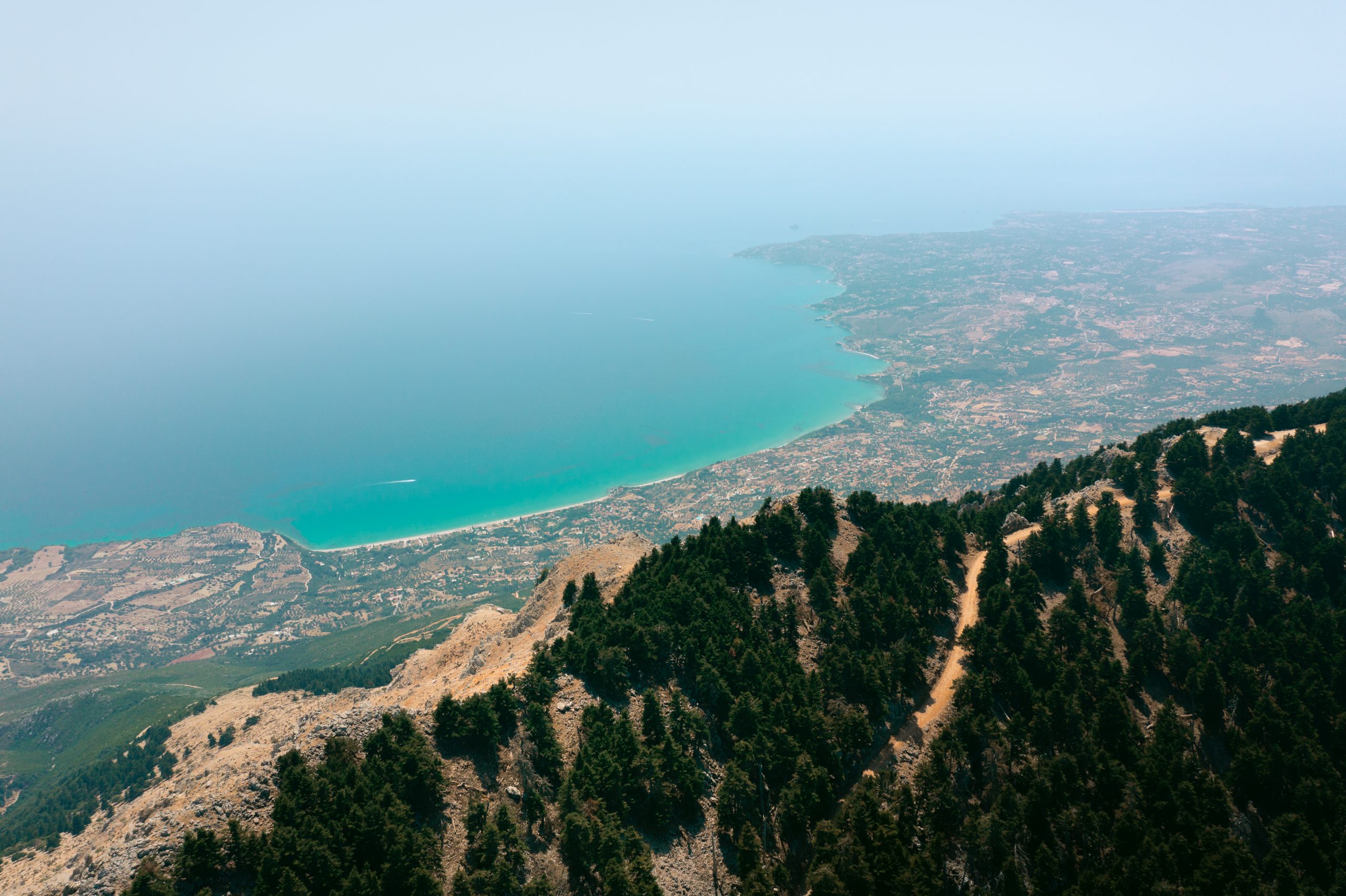While Greece’s island mountains may not be as famous as its sun-drenched beaches – Psiloritis perhaps being the exception – their allure runs deep. From the “giant of Crete” to the peaks of Mount Ainos, Kerkis, Attavyros, and Zas, these mountains have captivated people since antiquity with their mythology, wild beauty, unique ecosystems and sweeping views of the endless sea. Spring is the perfect time to answer their call.
With mild temperatures, blooming wildflowers, and a chance to truly reconnect with nature, Crete, Kefalonia, Samos, Rhodes, and Naxos offer hikers five unforgettable ascents. Best of all? You don’t have to choose between mountain and sea – here, you can have both.
Kefalonia – Mount Ainos, 1,628 meters
One of the few National Parks located on a Greek island, Mount Ainos – part of the Natura 2000 protected area network and the Kefalonia-Ithaca Geopark – is renowned for its unique ecosystem. Rising to 1,628 meters, it’s the highest peak in the Ionian Islands and dominates southeastern Kefalonia. The mountain is cloaked in rare black fir trees (Abies cephalonica), which earned it the Venetian name Monte Nero – the “Black Mountain.” This haven of wild beauty is home to the famous free-roaming Ainos horses and offers five marked hiking trails of moderate difficulty. The trail from Digaleto at the mountain’s base to the Megas Soros summit spans about 6.5 km, winding through dense fir forest and rewarding hikers with views of the entire Ionian Sea – on clear days, even the mountains of Aetolia-Acarnania come into sight. The full hike takes about 5 hours.
Crete – Mount Psiloritis, 2,456 meters
With five peaks exceeding 2,000 meters, the Ida Mountain range – commonly known as Psiloritis – is home to the Ideon Cave, where, according to Greek mythology, Zeus was raised. The ninth-highest mountain in Greece towers over the center of Crete, offering a stunning mix of gorges, caves, forests, and traditional villages that are perfect for exploration. Climbing the sacred mountain of the Minoans is no easy task, but the reward is breathtaking: panoramic views stretching from the White Mountains to the island of Chrissi and from Heraklion to Gavdos. The hike to the Timios Stavros summit (2,456 m) follows a stone path that starts at Lakos tou Mygerou, overlooking the Cretan Sea, and continues along the European E4 trail. It’s a 6-hour trek, requiring proper gear, as even in summer, temperatures can dip below zero at night.
Samos – Mount Kerkis, 1,437 meters
This massive rock rises 1,437 meters above the western side of Samos, offering panoramic views of the Aegean – from Lesvos all the way to Leros – on clear days. A rugged and rocky peak, Mount Kerkis (or Kerketeas), is rich in history and nature. Its slopes are home to many springs and caves, such as the Cave of Pythagoras or Sarantaskaliotissa Cave, which also houses a small chapel dedicated to the Virgin Mary. There are five trails leading to Vigla, the peak of Kerkis, which serves as a refuge for many endangered animals and plants. Vigla is part of the Natura 2000 protected area network. Whichever trail you choose, the hike to the summit is about 11 kilometers long.
Rhodes – Mount Attavyros, 1,215 meters
Rhodes offers a different kind of experience when you leave behind its famed beaches and head inland to its tallest mountain, Mount Attavyros. Known for its striking light and the ruins of the ancient Temple of Attavyrian Zeus, this peak stands at 1,215 meters. Hikers making their way from the village of Aghios Isidoros to the summit of Aghios Ioannis are treated to views over the island, the nearby Dodecanese islands, and the coast of Turkey. The climb takes about 3.5 to 4 hours and is moderately challenging – only the foothills are forested, while the rest of the mountain is bare and rocky due to overgrazing. Spring is the ideal time to conquer the highest peak in the Dodecanese and explore the villages of Embonas, Sianna and Monolithos.
Naxos – Mount Zas, 1,004 meters
Another mountain linked to the myth of Zeus, Mount Zas – whose summit reaches 1,003 meters – is the highest peak in the Cyclades and one of Naxos’ most popular hiking destinations. According to mythology, Zas (the local name for Zeus) was where the king of the gods grew up, to escape the wrath of his father, Cronus.
The hike usually begins from Filoti, the island’s largest village, or from the small church of Aghia Marina near the village of Danakos, and follows the same ancient path used since antiquity. The route passes by the Arion spring and the Cave of Zas before reaching the summit, which offers views of Naxos’ lush slopes and the Aegean Sea. The circular hike from Filoti takes around 5.5 hours.
Stay Connected with ticketdigg.com!! Be the first to know about Best Deals and discounts for places around the Globe.








